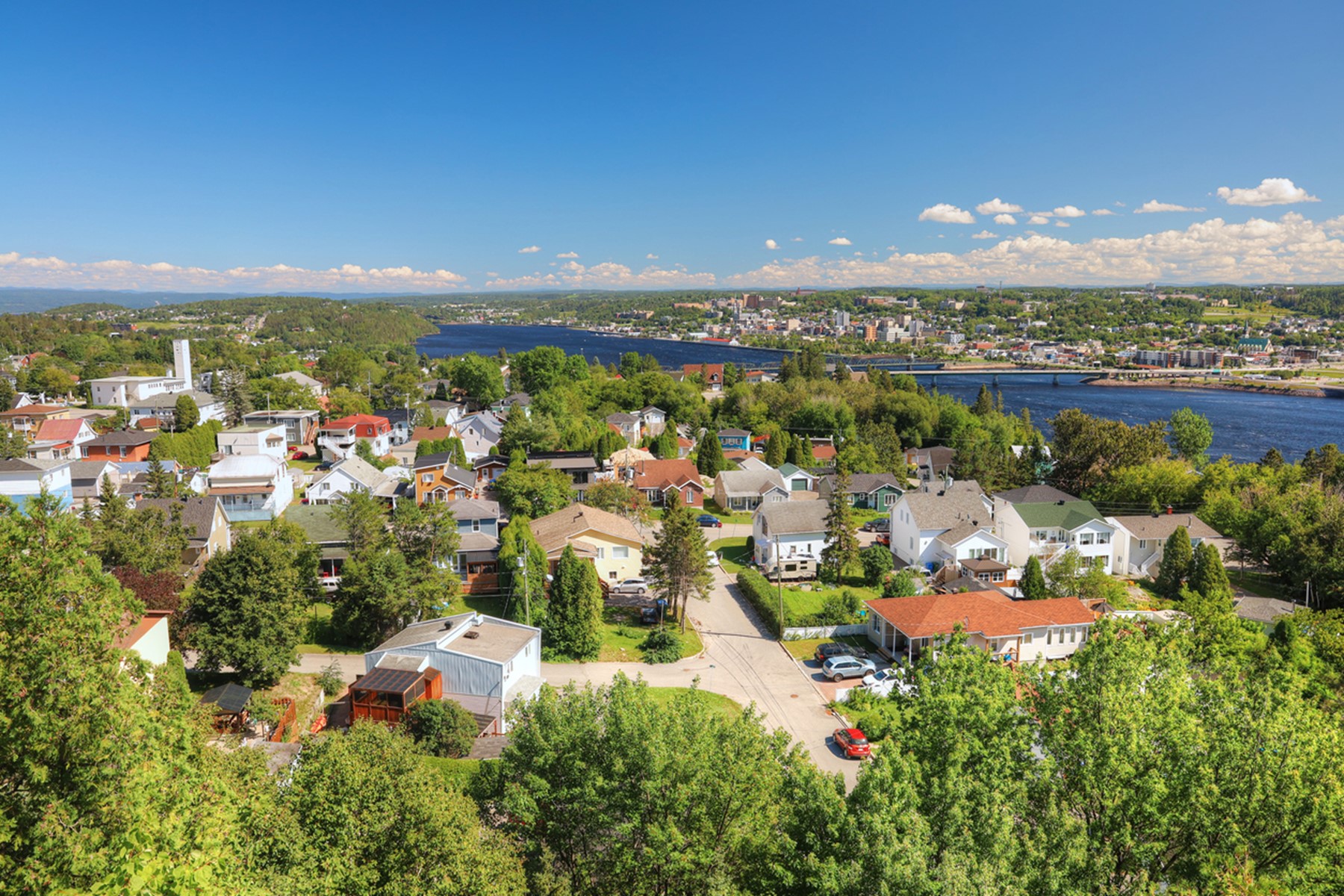
Saguenay–Lac-Saint-Jean Business Office: Propelling economic development forward in the region
The team at the CED's Saguenay–Lac-Saint-Jean Business Office is contributing to economic development in this region where natural resources rhyme with tourism and industrial development.
From: - August 30, 2023
With a surface area of 95,892 km2, the Saguenay–Lac-Saint-Jean region is one of the three largest regions in Quebec’s northern territory. Economic development there is largely attributable to the region’s great capacity for hydroelectricity and immense forested lands, which at the start of the 20th century attracted major paper manufacturers and aluminum producers looking for energy.
A diverse team

To serve this region, the Saguenay–Lac-Saint-Jean BO counts on a team with people of various ages and backgrounds, an advantageous situation. “Some members have nearly 20 years of experience at Canada Economic Development for Quebec Regions (CED), while others have just joined us. The seasoned employee knows CED’s culture and our ways of doing things, while the new employee comes with fresh eyes. This diversity enables us to see situations from different angles and find innovative solutions. It’s the best of both worlds!” says Stéphane Bergeron, Regional Director of the BO based in Alma.
Building relationships with new players
Here, like elsewhere in Quebec, employees had to opt for remote work during the COVID-19 pandemic. The return to normal has brought with it some interesting challenges, but also some wonderful opportunities, Stéphane points out. “During this time, the players in the community changed. We are now building bridges with new players. We must learn to know them, present our programs to them, and together explore avenues for economic development. This groundwork is very stimulating. We seek to act alongside community stakeholders, including the Sociétés d’aide au développement des collectivités (SADC), chambers of commerce, regional county municipalities (RCMs), and the Government of Quebec.”
Many assets
To ensure its economy develops, the region has several assets, including the presence of an industrial cluster in the aluminum sector, the largest forested region in Quebec, the Université du Québec à Chicoutimi (UQAC), several research and technology transfer centres, and a military base in Bagotville, in the Saguenay.

This military base recently made major investments, including in the security and defence sector and in major industrial projects. “As such, nearly $500 million in developments are planned at this location to welcome F-35 fighter planes in 2026,” notes Stéphane. “Another example: Rio Tinto is planning to invest $1.4 billion to build a new aluminum smelter at the Complexe Jonquière, in Saguenay, and plans to develop a green aluminum produced without greenhouse gas emissions by ELYSIS (a joint venture between Rio Tinto and Alcoa), at its facilities in Alma, which will have major economic repercussions for many suppliers.”
A critical mass of SMEs
CED’s team intends to help its clients seize these business opportunities by facilitating networking among SMEs and large businesses such as the aluminum smelters. “The region has a critical mass of businesses in the manufacturing sector, including many equipment manufacturers,” he adds. “These equipment manufacturers are able to design the devices prime contractors need. We want to assist them to maximize the economic spin-offs of major projects in the region.”
CED is also supporting many projects in the agri-food industry, another major economic hub in the region. Think of Camerises Mistouk; the Nutrinor cooperative; the AgroBoréal centre of excellence with its mission to foster sustainable development in boreal industries; and Agrinova, the college centre for technology transfer (CCTT) associated with Collège d’Alma, which specializes in applied research and innovation in agriculture.
In line with the Government of Canada’s main priorities, CED is giving a boost to the environmental transition. The territory has many businesses and organizations that have distinguished themselves in this area, including Collectes Coderr, a social economy business based in Alma that specializes in the collection and transportation of recyclable waste and materials. Think also of bike manufacturer Devinci Bikes, located in Saguenay, with its reputation for excellence that extends well beyond our borders. We find its city bikes in cities such as Montréal and Toronto, but also in London, Barcelona, Monaco, Dubai, Rio de Janeiro, Honolulu, and Aspen.
Major tourist attractions

With the majestic Saguenay fjord, the Monts-Valin national park, the immense Lac-Saint-Jean, the Véloroute des bleuets, and the Zoo sauvage de Saint-Félicien, to mention just these attractions, the region, known for its warm hospitality, offers an impressive experience to tourists, with the industry generating nearly $300 million a year.
Thanks to CED’s support, several projects have been launched in the tourism sector. We can mention the Projet d’aide aux petites entreprises touristiques rurales (PAPETR); some 60 tourism businesses in the region will receive assistance to enhance their facilities and improve their services. This project, funded by CED, is being piloted in the region by the five local SADCs.
The region, which took advantage of the pandemic by attracting more Quebec tourists, is currently seeking to make a name for itself in marine tourism. “With close to 140,000 visitors expected in 2023, Saguenay is the largest port of call on the St. Lawrence and is accessible 365 days a year. Local shops and businesses benefit from the economic spin-offs of this tourism,” Stéphane gladly mentions.
Winning conditions
Located in Grande-Anse, the Port of Saguenay provides a direct connection between the Grand Nord region and primary international markets. This highly strategic location includes a maritime operations sector, a vast industrial-port zone, an intermodal sector with rail service, and access to national highways. “All the reception conditions are there to enable businesses to shine on international markets by fostering trade,” indicates the director. Add to this proximity to Northern resources, including the presence of phosphate deposits in Saguenay, which could help the region carve out a place for itself in the lithium battery niche.
Whether for this industry or elsewhere, the team will be available to support SMEs and organizations in the region, in partnership with the different economic players in the Saguenay–Lac-Saint-Jean region.